Atopic Dermatitis (Eczema) - Topic Overview
Articles On Atopic Dermatitis (Eczema)
Atopic Dermatitis (Eczema)
Atopic Dermatitis (Eczema)
What causes atopic dermatitis?
The cause of atopic dermatitis isn't clear, but it affects your skin's ability to hold moisture. Your skin becomes dry, itchy, and easily irritated.
Most people who have atopic dermatitis have a personal or family history of allergies, such as hay fever (allergic rhinitis) or asthma.
Things that may make atopic dermatitis worse include:
- Allergens, such as dust mites or animal dander.
- Harsh soaps or detergents.
- Weather changes, especially dry and cold.
- Stress.
- An allergic reaction to certain foods, such as eggs, peanuts, milk, wheat, fish, or soy products.
- Skin infection.
What are the symptoms?
Atopic dermatitis starts with dry skin that is often very itchy. Scratching causes the dry skin to become red and irritated (inflamed). Infection often occurs. Tiny bumps that look like little blisters may appear and ooze fluid or crust over. These symptoms-dryness, itchiness, scratching, and inflammation-may come and go. Over time, a recurring rash can lead to tough and thickened skin.
Mild atopic dermatitis affects a small area of skin, isn't very itchy, and usually goes away with moisturizer. Severe atopic dermatitis covers a large area of skin that is very itchy and doesn't go away with moisturizer.
People tend to get the rash on certain parts of the body, depending on their age. Common sites for babies include the scalp and face (especially on the cheeks), the front of the knees, and the back of the elbows. In children, common areas include the neck, wrists, legs, ankles, the creases of elbows or knees, and between the buttocks. In adults, the rash often appears in the creases of the elbows or knees and on the nape of the neck.
How is atopic dermatitis diagnosed?
A doctor can usually tell if you have atopic dermatitis by doing a physical exam and asking questions about your past health.
Your doctor may advise allergy testing to find the things that trigger the rash. Allergy tests can be done by an allergist (immunologist) or dermatologist.
How is it treated?
Mild atopic dermatitis can be treated at home.
- Moisturize often to treat and prevent dry skin. Thicker creams and ointments, like petroleum jelly, work better than thinner lotions.
- Avoid things that trigger rashes, such as harsh soaps and detergents, dander, and any other things you are allergic to.
- Control scratching. You may want to cover the rash with a bandage to keep from rubbing it.
- Putting mittens or cotton socks on your baby's hands may prevent him or her from scratching.
- Wearing cotton gloves at night may help older children and adults. (Moisturize hands first before putting on the gloves.)
- Use medicine prescribed by your doctor.
- Bathe with lukewarm or warm (not hot) water. Soak for about 10 minutes. Use soap or shampoo at the end so that you aren't sitting in soapy water.
But if your symptoms are bothering you and aren't getting better, see your doctor. Getting medical treatment early may keep your symptoms from getting worse.
In severe cases, your doctor may prescribe pills or give you a shot to stop the itching. Or you may get ultraviolet (UV) light treatment at a clinic or doctor's office.
Frequently Asked Questions
Learning about atopic dermatitis:
Living with atopic dermatitis:
Next In Atopic Dermatitis (Eczema)
further reading
Today on WebMD

Baby's Bathing Routine
A good one helps halt eczema flares

Getting your eczema under control?

Does it affect your eczema?

And be educated when shopping for cosmetics.
Recommended for You
Facts About Eczema
Can You Ace This Eczema Quiz?
The Best Moisturizers for Eczema
Tips for Exercising With Eczema
Do You Know How to Manage Your Eczema?
Top Eczema Triggers to Avoid
Psoriasis or Eczema?
Tools & Resources
Health Solutions
More from WebMD
About
WebMD Network
For Advertisers
© 2005 - 2018 WebMD LLC. All rights reserved.
WebMD does not provide medical advice, diagnosis or treatment.
Atopica For Dogs
Step 1. Select Milligrams:




Step 2. Select a Supply:
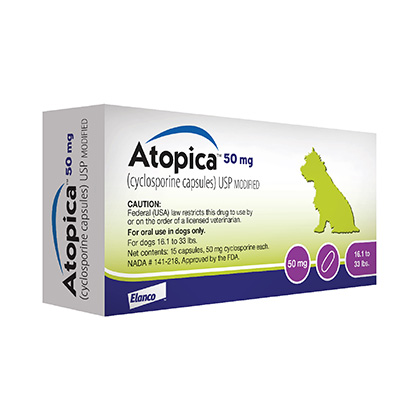






What is Atopica for Dogs?
Atopica for Dogs is used to treat atopic dermatitis (commonly called skin allergies) in dogs. Signs of skin allergies include itching, scratching, licking, gnawing, chewing, skin infections, hair loss, terrible odor, and sleepless nights. Atopica for Dogs requires a prescription from your veterinarian.
For skin allergy treatment for cats, we recommend Atopica for Cats.
Dogs (6+ months of age, weighing 4+ lbs)
- Significantly reduces itching and skin lesions
- Proven effective in most dogs
- Allows you to control your pet's problem without steroids
- Safe to use over long periods without the serious side effects usually associated with steroids
How does Atopica for Dogs work?
Atopica targets the immune cells involved in the allergic reaction. You usually only administer one dose a day to control symptoms, but many dogs can be effectively controlled with every-other-day or twice-weekly dosing.
Not for human use. Keep this and all drugs out of the reach of children. For use in dogs only. Wear gloves during administration. Capsules should not be broken or opened. Wash hands after administration. In case of accidental ingestion, seek medical advice immediately and provide the package insert or the label to the physician. There are many possible drug interactions. Be sure to tell your veterinarian what other medications your pet is currently using. Give Atopica at least one hour before food or 2 hours after food.
Brand Name:
Generic Name:
What is the most important thing I should know about Atopica for Dogs?
Notify your veterinarian immediately if your pet develops fever (over 103°), painful urination, tiredness, sneezing, coughing, or runny nose. These symptoms could be early signs of dangerous side effects.
What is Atopica for Dogs?
Atopica for Dogs (cyclosporine modified) is an immunosuppressant available by prescription. Atopica is FDA approved for use in the treatment of atopic dermatitis in dogs at least 6 months of age weighing at least 4 lbs. Atopica for Dogs is available in 15 capsule blister packs in strengths of 10 mg for dogs 4-9 lbs, 25 mg for dogs 9.1-16 lbs, 50 mg for dogs 16.1-33 lbs and 100 mg for dogs 33.1-64 lbs. For dogs 64.1-79 lbs, give a combination of one 100 mg capsule and one 50 mg capsule as a single dose. For dogs 79.1-121 lbs give, two 100 mg capsules as a single dose. Atopica for Dogs is given once a day to start until satisfactory improvement is seen, usually 4 to 8 weeks. The medication can then be given every other day until the clinical signs of atopic dermatitis are satisfactorily controlled, then the medication can be given every 3 or 4 days.
What should I discuss with my veterinarian before giving Atopica for Dogs?
Tell your veterinarian if your pet has liver disease, kidney disease, cancer, high blood pressure, a viral, bacterial or fungal infection, or any other serious or chronic condition. Tell your veterinarian if your pet is pregnant or lactating, and if you plan to breed your pet.
How should Atopica for Dogs be given?
Give Atopica for Dogs exactly as directed by your veterinarian. If you do not understand these directions, ask your veterinarian or pharmacist to explain them to you. Give Atopica for Dogs 1 hour before or 2 hours after a meal. Allow plenty of water for the pet to drink. Do not remove a capsule from the blister pack until required for use. When the capsule is removed from the blister pack there is a characteristic, noticeable smell which is normal. Wear gloves during administration. Capsules should not be broken or opened. Wash hands after administration. Your veterinarian may want your pet to have regularly scheduled blood tests during treatment to monitor effectiveness and side effects.
What are the potential side effects of Atopica for Dogs?
If any of the following serious side effects occur, stop giving Atopica for Dogs to your pet and seek emergency veterinary medical attention: an allergic reaction (difficulty breathing, swelling of the lips, tongue or face, and hives). Other less serious side effects may occur. Continue giving Atopica for Dogs and talk to your veterinarian if your pet develops vomiting, soft stools or diarrhea, muscle cramps, muscle weakness, loss of appetite, and change of hair coat. Other side effects may occur. Talk to your veterinarian about any side effect that seems unusual or bothersome to your pet.
What happens if I miss giving a dose of Atopica for Dogs?
Give the missed dose as soon as you remember. If it is almost time for the next dose, skip the dose you missed and give the next regularly scheduled dose. Do not give a double dose unless otherwise directed by your veterinarian.
What happens if I overdose my pet on Atopica for Dogs?
Seek emergency veterinary medical treatment.
What should I avoid while giving Atopica for Dogs to my pet?
The safe use in breeding, pregnant or lactating pets has not been determined. Do not use Atopica for Dogs in pets with known allergy to the medication. The drug should not be used in pets with kidney disease, stomach ulcers, and certain blood disorders. Prolonged use of Atopica can result in bacterial or fungal infection related to a decreased effect of the immune system.
What other drugs will affect Atopica for Dogs?
Tell your veterinarian what medications your pet is currently using and any new products, including herbal remedies you may start to give. Drug/drug interactions could cause a decrease in effectiveness or an increase in side effects of either Atopica or the other medication being given. Examples of medications that may cause drug/drug interactions are: SMZ-TMP (Bactrim, Septra), gentamicin, etodolac (EtoGesic), piroxicam (Feldene), ketoconazole (Nizoral), cimetidine (Tagamet), ranitidine (Zantac), itraconazole (Sporanox), methylprednisolone (Medrol), erythromycin, Allopurinol (Zyloprim), metoclopramide (Reglan), prednisolone, digoxin (Lanoxin), or any type of vaccination.
Atopica for Dogs Directions:
- Atopica for Dogs (cyclosporine modified) is a prescription medication used in the treatment of atopic dermatitis in dogs.
- Atopica for Dogs (cyclosporine modified) comes in capsule form and is available in four strengths: 10 mg, 25 mg, 50 mg, and 100 mg.
- You usually only administer one dose a day to control symptoms, but many dogs can be effectively controlled with every-other-day or twice-weekly dosing. Administer according to your veterinarian's instructions.
- Wear gloves during administration. Capsules should not be broken or opened. Wash hands after administration.
- Give Atopica for Dogs at least one hour before food or 2 hours after food.
Do not remove capsule from blister pack until required for use. When the capsule is removed from the blister pack there may be a characteristic, noticeable smell which is normal.
Atopica For Dogs Dosage for Dogs: (Over 6 months of age)
Should be stored at controlled room temperature between 59° and 77° F (15-25° C). Keep away from pets and children.
ITCHY DOG?
YOU’VE COME TO THE RIGHT PLACE.
If your dog is constantly scratching or licking, it may be suffering from atopic dermatitis, a common allergic condition that causes a dog’s skin to become extremely itchy, red and scaly. Answer a few simple questions to find out .
ATOPICA TM (cyclosporine capsules) USP MODIFIED is a proven product for atopic dermatitis for dogs. It targets the cause of the problem to help reduce the incessant scratching, rubbing and licking.
ATOPICA TM (cyclosporine capsules) USP MODIFIED is indicated for the control of atopic dermatitis in dogs weighing at least 4 pounds.
IMPORTANT SAFETY INFORMATION FOR DOGS - ATOPICA TM (cyclosporine capsules) USP MODIFIED: Do not use Atopica in dogs with a history of neoplasia, with a hypersensitivity to cyclosporine, or in reproducing dogs.Atopica is a systemic immunosuppressant that may increase susceptibility to infection and development of neoplasia.For use only in dogs. Capsules should not be broken or opened.Wear gloves during administration and wash hands after administration.Gastrointestinal problems and gingival hyperplasia may occur at the initial dose. Safety and effectiveness has not been established in dogs less than 6 months or 4 lbs. Use with caution in dogs with diabetes mellitus or renal insufficiency, and with drugs that affect the P-450 pathway. Killed vaccines are recommended. The most common adverse events are vomiting and diarrhea. Please see product insert for full prescribing information.
© 2017 Eli Lilly and Company or its affiliates. Atopica, Elanco and the diagonal bar logo are trademarks of Eli Lilly and Company or its affiliates.
ATOPICA TM for Cats (cyclosporine oral solution) USP MODIFIED is indicated for the control of feline allergic dermatitis as manifested by excoriations (including facial and neck), military dermatitis, eosinophilic plaques, and self-induced alopecia in cats at least 6 months of age and at least 3 lbs in body weight.
IMPORTANT SAFETY INFORMATION ATOPICA TM FOR CATS (cyclosporine oral solution) USP MODIFIED: Do not use in cats with a history or suspicion of malignant disorders, feline leukemia virus (FeLV) or feline immunodeficiency virus (FIV) infection, or hypersensitivity to cyclosporine. Atopica is a systemic immunosuppressant that may increase susceptibility to infection, development of neoplasia, and decrease response to vaccination. Persistent, progressive weight loss may result in hepatic lipidosis; monitoring of body weight is recommended. For use only in cats. Wash hands after administration. People with known hypersensitivity should avoid contact with Atopica. Do not use with other immunosuppressive agents. It is important for cats to avoid exposure to Toxoplasma gondii during treatment. Use with caution in cats with diabetes mellitus or renal insufficiency, and with drugs that affect the P-450 enzyme system. The most common adverse events were vomiting, weight loss, diarrhea or loss of appetite. Please speak with your veterinarian for advice. Please see product insert for full prescribing information.
© 2017 Eli Lilly and Company or its affiliates. Atopica, Elanco and the diagonal bar logo are trademarks of Eli Lilly and Company or its affiliates.
Canine juvenile cellulitis
Canine juvenile cellulitis (juvenile pyoderma, juvenile sterile granulomatous dermatitis and lymphadenitis, or puppy strangles) is an immune-mediated disease of young dogs characterized by sterile granulomatous and pustular dermatitis [3] .
Lesions commonly appear on the face, pinnae, and submandibular lymph nodes [1] , but can also occur on the feet, abdomen and thorax, vulva, prepuce, or perianal area [4] .
This condition is common in young puppies of all breeds, from 3 weeks to 8 months of age [5] , although adult dogs may also be affected [6] . Litter mates may also be affected [7] .
Early clinical signs usually consist of fever, joint pain and lameness [8] , and facial dermatitis with edematous cellulitis. The dermatitis usually progresses to the ears as otitis externa and characteristic draining fistulas are common. The affected skin is often painful but not pruritic [9] .
Lymphadenopathy and neurological symptoms are sometimes observed [10] .
Because this disease is observed at the time of vaccinations [11] and juvenile cellulitis has preceded diseases such as hypertrophic osteodystrophy [12] , immunosuppression associated with vaccines cannot be eliminated as an etiological agent.
Diagnosis is often based on presenting clinical signs and response to steroids, but histopathological analysis of biopsies is usually definitive, largely depicting sterile pyogranulomatous inflammation [13] .
A differential diagnosis would include pemphigus foliaceous and juvenile staphylococcal pyoderma (puppy pimples).
Treatment usually involves parenteral prednisolone at 1 - 2 mg/kg orally each morning, and/or cyclosporin at 5 mg/kg orally once daily.
Bathing of non-facial wounds with chlorhexidine may limit secondary bacterial diseases.
Zinc-responsive dermatosis
Zinc-responsive dermatosis are a relatively uncommon scaling skin disorder caused by frank zinc deficiency, zinc malabsorption, or improper zinc utilization.
Zinc is important in a multitude of biological functions, including regulation of the immune response, modulation of keratogenesis and wound healing, maintenance of normal reproductive function, and acuity of taste and smell [2] .
There are a number of clinical presentations in dogs:
- Syndrome I - seen almost exclusively in northern breed dogs (i.e. Siberian Husky and Alaskan Malamute), characterized as an inherited impairment in the absorption or metabolism of zinc [3][4]
- Syndrome II - rapidly growing large-breed puppies consuming a high phytate diet, zinc-deficient diet, or diet supplemented with components that may inhibit zinc absorption [1] .
As well, a number of hereditary zinc deficiencies have been reported including nasal hyperkeratosis has been reported in Golden retrievers [5] and congenital follicular parakeratosis in Rottweiler and Siberian Husky dogs [6] .
Zince deficiency has also been reported in zinc-deficient commercial diets [7] .
Both syndromes manifest clinically with mucocutaneous junction and pressure point erythema, scaling, crusting, alopecia, pyoderma and lichenification that primarily affect the head.
In severe cases, anorexia, lethargy, retarded growth, suppurative paronychia, distal limb pyoderma, and peripheral lymphadenopathy are evident [8] . Skin lesions include generalized erythematous-crusted papules, often pruritic, accompanied by hyperkeratosis, erythema and swelling of footpads. Visual deformities such as corneal vacuoles are also reported [6]
Diagnosis is based on histological examination of affected skin, demonstration of reduced zinc levels in blood (normal = 0.8–2.0 ppm) and response to therapy. The demonstration of low zinc concentrations in serum and hair have only a corroborative value in the diagnosis of zinc-responsive dermatosis in dogs and must be correlated with response to therapy in order to obtain a diagnosis [9] .
Treatment is usually successful with zinc and retinoid supplementation. Zinc can be given as a daily oral supplement as zinc gluconate (10 mg/kg/day orally), and in severe cases, an intravenous injection of zinc sulfate (10 mg/kg) may be required. Treatment should be continued for one month to determine response to treatment, and the daily dosage should be increased by 50% if the initial dosage is not effective [10] .
Additional therapy includes antimicrobial therapy if indicated and frequent bathing with keratolytic shampoos, such as sulfur and salicylic acid, may be beneficial [11] .
Syndrome 1 has a fair prognosis, although an underlying heritable susceptibility suggests that affected individuals not breed. Syndrome 2 has an excellent prognosis.
Dermatitis hund
Purchase PDF Purchase

Veterinary Immunology and Immunopathology
Serum food allergen-specific antibody testing is widely offered to identify suitable ingredients for diets to diagnose adverse food reaction (AFR) in dogs with allergic skin disease. Antibody concentrations in blood samples obtained during an unsuccessful diet to help in the choice of diet changes may be influenced by the previous diet. The objective of this paper was to measure food antigen-specific IgE and IgG for the most commonly used 16 food antigens before and after an elimination diet. Levels of food-specific serum IgE and IgG antibodies were measured by enzyme-link immunosorbent assay (ELISA). Dogs had detectable IgE antibodies to beef, pork, lamb and cows’ milk; and detectable IgG antibodies to beef, pork, lamb, cows’ milk, chicken and turkey. Of 19 dogs with complete data sets, 14 dogs showed clear improvement during diet and in 7 dogs AFR could be diagnosed by deterioration on rechallenge and subsequent improvement on refeeding the diet. Serum was obtained before and 6–8 weeks after beginning such a diet. There was no significant difference in pre- and post-diet levels for any of the individual allergens nor for the total IgE and IgG concentrations of all antigens (P = 0.55 and P = 0.53 respectively). In these 19 dogs in which an elimination diet was used for the diagnosis of food allergy and in which 14 were probably food allergic and 7 were proven food allergic there were no significant differences in food-specific antibodies before and after an elimination diet of 6–8 weeks.
Choose an option to locate/access this article:
Check if you have access through your login credentials or your institution.
Seborrhea Shampoo for Dogs
Seborrhea is a fairly common skin condition in dogs, and the primary treatment for it is a special seborrhea shampoo. However, you can't buy just any shampoo. Depending on your dog's condition, you'll want to pay attention to what you're getting.
Seborrhea Shampoo for Dogs
Seborrhea is a skin condition categorized into three types. It's important to know the types because what your dog has will determine what shampoo you need to use on them. A brief rundown of the different types of seborrhea:
- Seborrhea sicca is the "dry form" of seborrhea. Dogs will have scaly, very dry, flaky skin.
- Seborrhea oleosa is a result of overactive oil glands. Dogs will have an odor that won't go away, accompanied by greasy hair.
- Seborrheic dermatitis is a combination of the other two. Dogs will display symptoms of both.
While you can ensure your pet's seborrhea goes away for good with nutritional supplements, it may not work unless you're treating him with a shampoo that can help alter the way the cells are over-producing. It's also beneficial as many of these shampoos can contain ingredients meant to sooth irritated skin.
How the Shampoo Works
Not only can shampoos provide relief, but they actually can alter the rate in which the skin cells are producing and secreting. Medicated shampoos can also strip off some of that excess skin building up. It's not an immediate fix, just as the nutritional supplements aren't. It takes time for their skin to adapt and change, probably around the timeline of a month or so.
What Kind of Shampoo to Use
As mentioned above, the type of shampoo you use depends on what state your dog's skin is in. Shampoos should contain absolutely no fragrances, dyes, or other unnecessary components. For the milder cases, try a hypoallergenic and moisturizing shampoo. However, for more severe cases, you might want to try a shampoo containing sulfur or salicylic acid. These ingredients aid in removing those skin scales and help prevent them from coming back.
On the other end of the spectrum, we have the greasy, smelly dog suffering from the other type of seborrhea. For these dogs, use shampoos containing tar products.
Lastly, for seborrheic dermatitis, where you have dry and oily attributes, try a benzoyl peroxide shampoo, which will help flush the hair pores and remove greasy scales.
How to Use the Shampoos
Give your dog a 10 to 15 minute warm bath before hand. Most shampoos will likely suggest leaving the lather on your dog for approximately 15 minutes to give it time to work with their skin. However, always be sure you read all labels on your bottle thoroughly, and keep shampoo away from the eyes, nose and mouth. It's recommended you gently place cotton balls in your dog's ears if you're worried about water or shampoo getting in there, but take care in doing this.
Juvenil dermatitis
Af dyrlæge Peter Kierk
Hvis man har mistanke om sygdommen, er det meget vigtigt, at man kontakter sin dyrlæge så hurtigt som muligt for at undgå ardannelser og hårløse områder efter afsluttet behandling. Ubehandlet kan den juvenile dermatitis i sjældne tilfælde medføre døden, hvis den spreder sig videre i kroppen.
God hygiejne omkring hvalpene i hele opvæksten, fodring med et optimalt foder og generel omsorg er vigtige elementer i denne sammenhæng.
Hvad er stafylokokallergi hos hunde? Stafylokokallergi er en allergisk hudlidelse. Den opstår, fordi hunde, der har en dyb hudbetændelse forårsaget af en bestemt bakterie (stafylokokkus intermedius),…
Hot spot, som også kaldes akut fugtig hudbetændelse, Retriever eksem, sommersår, fugtig eksem mm., er en meget plagsom hudlidelse for hund og ejer. Hot spot opstår, når der går hul på huden, og hudens…

Foder til hunde med foderallergi
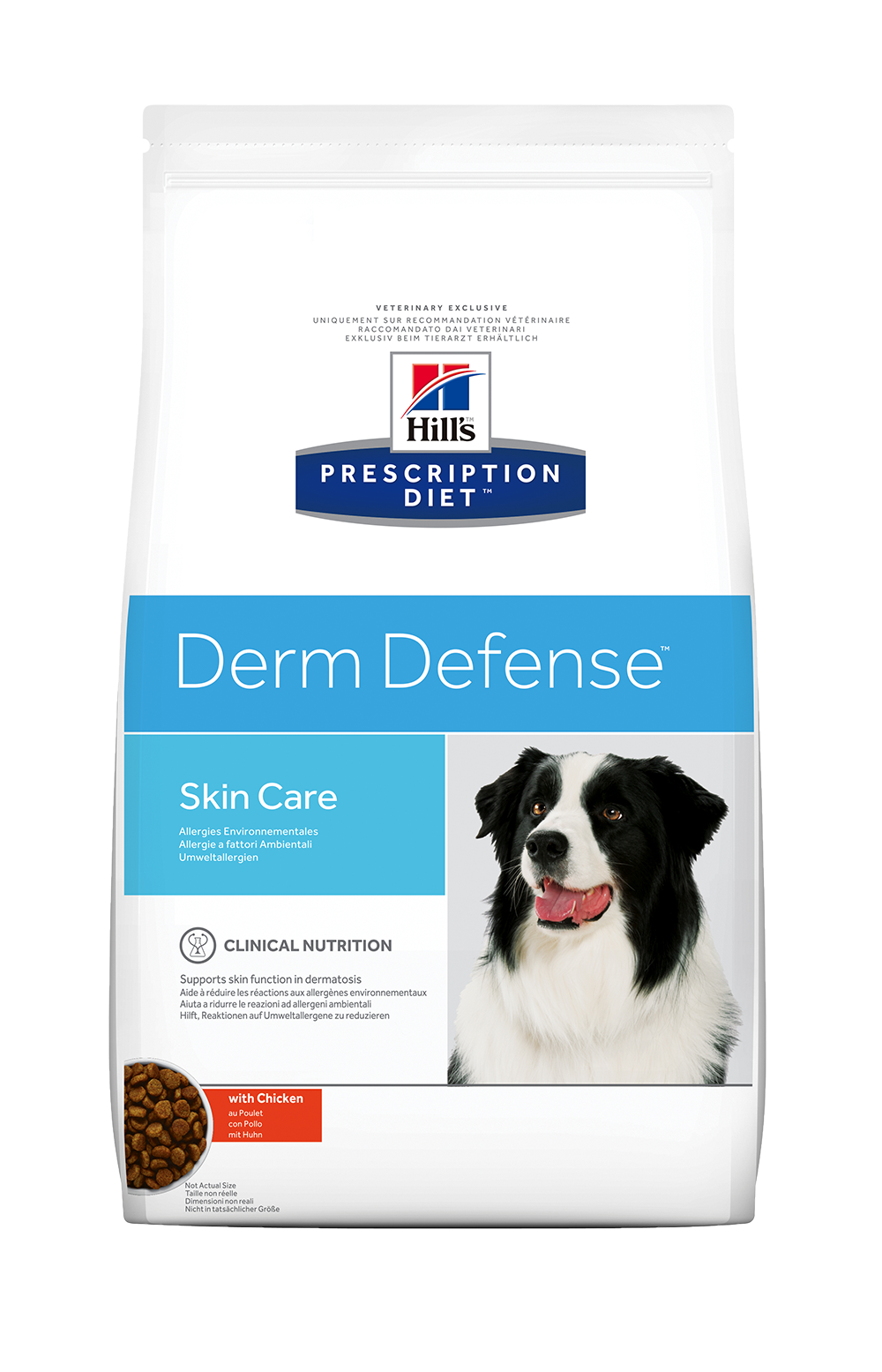
Beskytter hudbarrieren mod allergener

Huddiæt til hunde
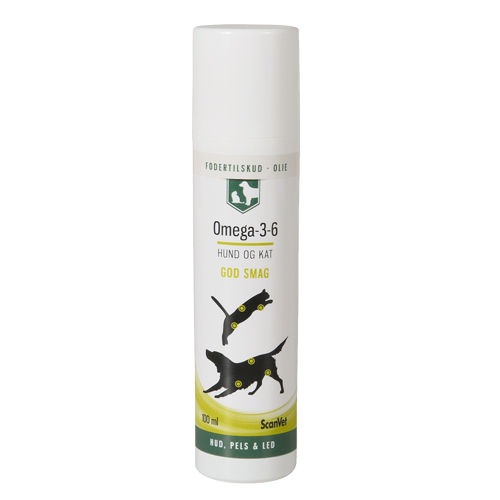
Fodertilskud til hud, pels og led
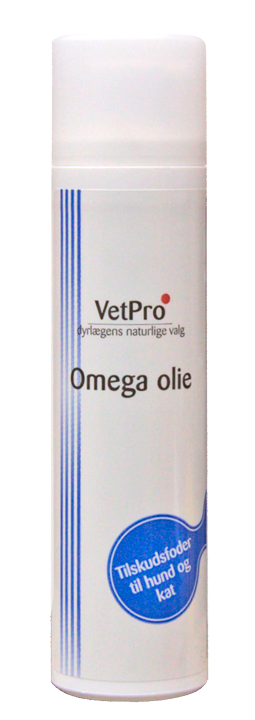
Omega 3 og -6 tilskud til hund og kat
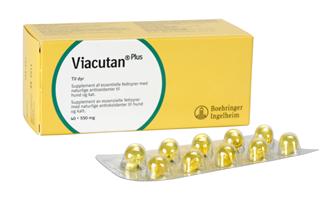
Omega 6 og Omega 3 for hud og pels hos hund og kat

Allergidiæt til hunde

Foder til hunde med foderallergi

Portionsanrettet kosttilskud med omega-3 og -6

Mousse til hunde og katte med følsom hud
Allergidiæt til hunde
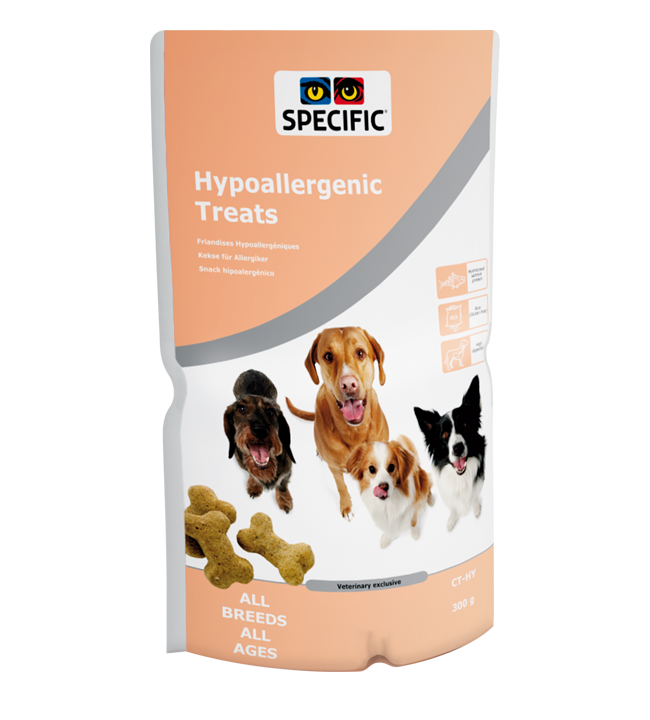
Godbidder til allergiske hunde
Vi sender faglig information, tips og tricks og gode tilbud 2-4 gange om måneden. Nye abonnenter får en rabatkode på 10% til webshoppen.


 Indhold på Netdyredoktor.dk
Indhold på Netdyredoktor.dk
Indholdet på Netdyredoktor.dk er udelukkende til informationsbrug. Disse informationer må på ingen måde kompensere eller erstatte den professionelle rådgivning og behandling, som gives af en autoriseret dyrlæge. Læs afsnittet om juridisk information og ansvarsfraskrivelse samt cookiepolitik .
Vores familiedyr er altid overladt til menneskers omsorg, både hvad angår pleje, sundhed og sygdom.
Det forpligter både dig som dyreejer og os som veterinærsygeplejersker og dyrlæger. Vi er med i et kompetent netværk, hvor vi altid kan trække på hinandens ekspertise. På den måde får dit dyr altid den bedste behandling.
Positive reactions to common allergens in 42 atopic dogs in Japan
Clinically important allergens for the diagnosis and treatment of atopic dermatitis vary geographically. In order to identify the most prevalent allergens in atopic dogs in Japan, 42 dogs with a clinical diagnosis of atopy were tested using both in vivo (intradermal skin test (IDST)) and in vitro (antigen-specific IgE assay) allergy tests. Allergens used for IDST included 26 allergen extracts from eight allergen groups: trees, weeds, grasses, house dust mites (HDM), molds, foods, epithelia, and arthropods. Immunodot assay was used to measure antigen-specific IgE against 24 allergens from these eight groups and against fish such as cod and sole. In the 42 dogs, the most common positive allergen reaction was to HDM on both IDST (29/42 dogs or 69%) and in vitro testing (23/42 or 54.8%). The second most frequent positive allergen reaction was to Japanese cedar pollen (21/42 or 50.0% for IDST and 7/42 or 16.7% for in vitro testing). In both tests, less than 20% of dogs had positive reactions to molds or foods. Positive reactions to cat epithelia were frequently found on IDST, but rarely found on in vitro testing. Agreement between the two tests was found in 26 instances: HDM (21 dogs), Japanese cedar pollen (five dogs) and wheat (one dog). In this study, the two most common allergens involved in atopic dermatitis in dogs in Japan were HDM and Japanese cedar pollen.
Choose an option to locate/access this article:
Check if you have access through your login credentials or your institution.
Traditional Shar Pei (German)
Informationsseite über den traditional / bone mouth Shar Pei in deutscher Sprache
Malassezien-Dermatitis & Krallenbettentzündung
Die häufigen Ohrenentzündungen liegen bei der Rasse oft an den zu engen Gehörgängen und diese Enge verhindert eine Luftzirkulation und gegünstigt somit Ohrenschmalz, in dessen sich wunderbar Bakterien und Pilze wohlfühlen.
Aber nicht nur der Shar Pei ist davon betroffen, sondern auch jeder andere Hund.
- erhöhte Feuchtigkeit der Hautoberfläche z.B. durch Faltenbildung, fettige Haut, feuchte Haut (z.B. durch schlecken)
- erhöhte Umgebungstemperatur
- erhöhte Produktion von Hautfetten
- div. Hauterkrankungen (Pyodermie, atopische Dermatitis etc.)
Wie sieht ein Befall von Malassezien Hefepilzen aus?


Bei der Malassezien-Otitis ist ein dunkler Ohrenschmalz typisch, was zu Verwechslung mit einem Befall durch Ohrmilben führen kann. Das Sekret riecht allerdings auffallend stark ranzig-käsig und läßt sich ohne Schwierigkeiten abwischen.
Bei meiner Hündin waren auch die Lefzen rötlich gefärbt, das Unterkiefer fühlte sich leicht verkrustet an (ohne optischen Befunde) und kurz vor dem Befund begannen die Haare zwischen den Augen auszufallen (Brillenbildung).
Auch ein tiefer Zug in das Ohr brauchte einen ganz ähnlichen Geruch wie den der Pfoten.



Der ranzige Geruch der betroffenen Stellen ist in der Regel ein eindeutiger Indiz auf Malassezia.
Ein Test mit der Wood´sche Lampe (Schwarzlicht) wird keine Sicherheit bringen, da Malassezia nicht fluoresziert.

Es gibt auch die Möglichkeit eines Pilzhemmers in Tablettenform. Da ich hierzu keine Erfahrung habe und nur im absoluten Ausnahmenfall im Hund landen würde, habe ich hierzu keine Informationen.
Das Malaseb-Shampoo sollte mind. 10 Minuten auf der betroffenen Stelle einwirken können. Das ist am Kopf, an den Ohren und ganz speziell an den Lefzen nicht so ohne weitere möglich. Denn das Shampoo sollte nicht abgeschleckt werden.
- 3,5 Liter Wasser
- 1 Tasse Wasserstoffperoxid (Apotheke)
- 1-3 Tassen weißer Essig (Essig-Essenz)
In einer Wanne angerichtet, können die Pfoten mehrmals täglich gewaschen werden. In einer Flasche abgefühlt, kann mit einem Wattebausch anderweitig betroffene Stellen betupft werden.
Bei Behandlung in den Ohren unbedingt darauf achten, dass nichts in den Gehörgang tropft.
Ich habe es bei meinem Hund an den Ohren und an der Lefze getestet. Mehrmals täglich habe ich die betroffenen Regionen betupft und trocknen lassen. Alle Stellen sind wunderbar verheilt.
Gerade in den warmen Sommermonaten, wenn Temperaturen und Luftfeuchte steigen, werden auch die Hefepilze wieder zum Problem. Hier sollte wieder auf die Ernährung geachtet werden und der Hund sollte gerade in diesen Monaten regelmäßig (je nach Stärke des Befall) 1-2x wöchentliche gebadet werden.
Hierzu muss nicht zwingend das Malaseb-Shampoo verwendet werden, man kann es auch vorab mit einem Teebaumölshampoo aus dem Fachhandel versuchen. Danach erfolgt eine Anti-Pilz-Spülung, welche man auch nutzen kann um dem Hund im Sommer eine kleine, und nützlich, Abkühlung zu verschaffen:
- 3,5 Liter Wasser
- 1 Tasse Zitronensaft
- 1 Tasse weißer Essig (Essig-Essenz)
- 1 Tasse Apfelessig
Wasserstoffperoxid und Zitronensaft können schwarzes Fell bleichen. Die Bleichung tritt nicht sofort und massiv ein, kann jedoch im weiterem Verlauf zu einer graufärbung des Fells führen.
Wer das umgehen möchte, der sollte die beiden Produkte durch Apfelessig ersetzen.
Diese Entzündung ist für den Hund sehr schmerzhaft. Umso schlimmer, wenn mehrere Krallen betroffen sind. Diese Entzündungen können eine Begleiterscheinung der Malassezien-Dermatitis sein. Können aber auch unfallbedingt entstehen.
- pflegend und beruhigend (auch gegen leichten bis mittleren Juckreiz)
Lavendel ist übrigens nicht giftig für den Hund! Allerdings ist das Lavendelöl für eine längere Behandlung nicht geeignet bzw. sollte von einem Tierheilpraktiker oder Tierarzt überwacht werden.




Комментариев нет:
Отправить комментарий